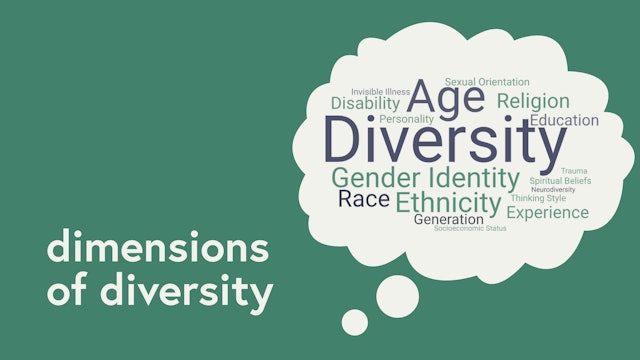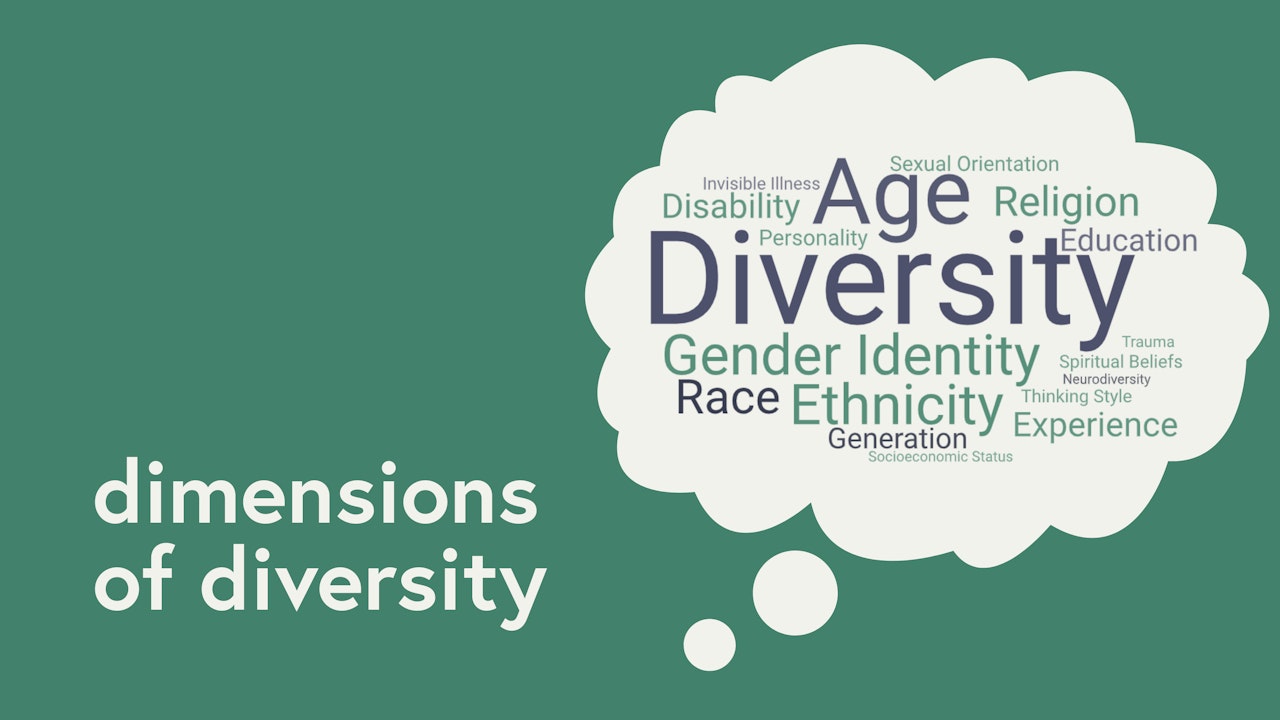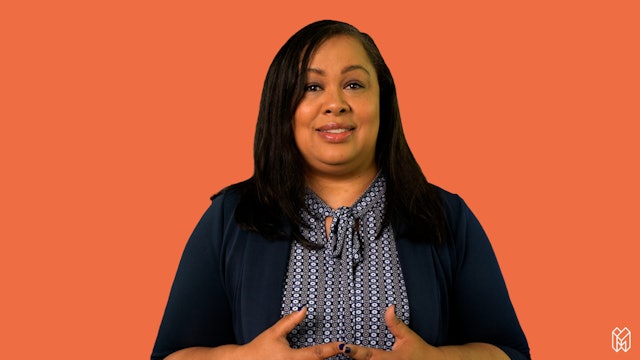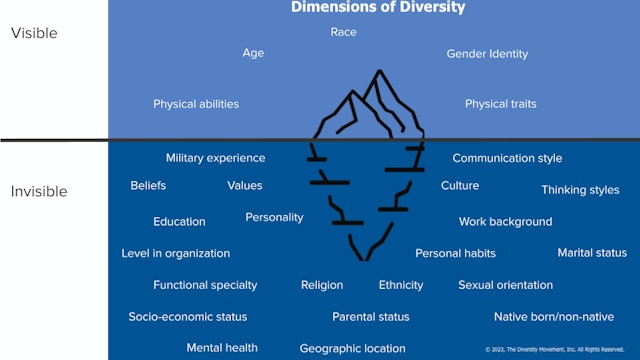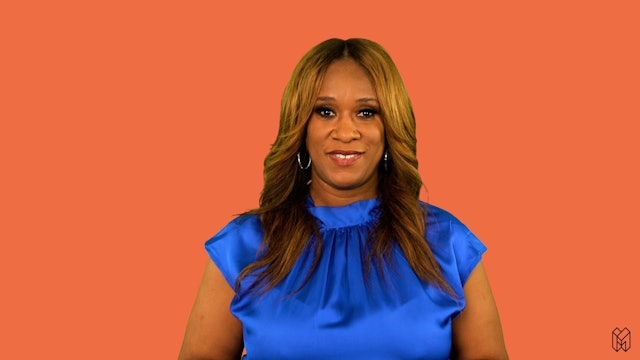-
Inclusive Language for Mental Health & Cognitive Diversity
Find out how to communicate inclusively when discussing mental and emotional health and neurodiversity -- the natural variations in brain functioning for learning, thinking, and processing information. Learn to recognize and avoid language that is trivializing, derogatory, or insulting.
-
What Do the Letters in LGBTQ+ Mean?
Confirm what each letter and symbol stands for in some commonly used acronyms, such as LGBTQ+, as a helpful starting point for recognizing and respecting human diversity in terms of sexual orientation and gender identity.
-
Should I Say African American, Black, or People of Color (POC)?
Review a variety of terms that are used to describe people’s race and or ethnicity. Confirm which terms are accurate, appropriate, and respectful of others. Raise your awareness to avoid using terms that are inaccurate and/or offensive.
-
Inclusive Language for Acquired Diversity
Learn to recognize the importance of using language that avoids trivializing or falsely referencing real traumas others may have experienced. Understand why acquired diversity -- the sum of people’s lived experience -- is an asset to your corporate culture and creative problem-solving capacity.
-
What are the Different Types of Diversity?
Consider the multi-dimensional aspects of diversity (beyond race and gender alone) to gain a better perspective on the wide array of groups and intersecting identities that are represented, recognized, and respected in a truly inclusive society.
-
What is AAPI Heritage Month?
Gain a richer understanding of how to observe AAPI Heritage Month company-wide in May, engaging all employees in celebrating the many contributions of Asian Americans and Pacific Islanders to American culture, including how to extend the value of this raised awareness throughout the year.
-
5 Core Principles of Gender Identity Etiquette
Here are five helpful guidelines you can follow to affirm people across the gender spectrum. These insightful etiquette tips will help you to avoid making assumptions, be respectful, and develop into an effective ally for people of all gender identities.
-
What is Dyslexia?
Learn more about dyslexia, a neurobiological learning disability that makes reading more challenging for roughly 1 in 5 people. Discover the high-level skills and competencies that often come naturally to people with dyslexia, adding to their value as employees and leaders.
-
What is Women's History Month?
Familiarize yourself with Women’s History Month and International Women’s Day -- how they originated, how they’re celebrated, and the value of observing them at your organization each year.
-
Understanding Sex, Gender Identity, and Sexual Orientation
Confirm your understanding of the terms sex, gender identity, and sexual orientation, and both the interplay and distinctions between the three. Learn when, whether, and how to discuss these self-identifying labels with others.
-
What is Gender Identity?
Consider how differently people are treated depending on whether they identify as a man, a woman, a person who is transgender or nonbinary, or another gender identity. By adding to your understanding of gender identities, you can better relate to and support others, no matter how they identify.
-
What is Neurodiversity?
Expand your understanding of neurodiversity, the natural range of variations in human cognitive processing. Learn why the benefits of a neurodiverse team – greater innovation, problem solving and creativity -- make it more than worthwhile to accommodate the work styles of neurodiverse employees.
-
What is Mental Health Awareness Month?
Gain a quick overview of the prevalence of mental illness in our society, and therefore your own workforce. Learn how to address a previously taboo topic, raise awareness, and significantly reduce stigma by observing Mental Health Awareness Month in May.
-
Inclusive Language for Physicality
Get insightful guidance on promoting inclusion in the workplace by describing people using professional and appropriate language, rather than referring to a person’s physical appearance, or physicality -- a practice that is usually unnecessary and irrelevant.
-
How to Commemorate Memorial Day in the Workplace
Use this guidance to ensure your organization marks Memorial Day in ways that are respectful, appropriate, and meaningful. Strengthen feelings of inclusion, particularly for those with personal connections to this annual holiday, including veterans and military families.
-
Being Inclusive for Halloween
Rethink Halloween through the lens of inclusivity, and you’ll quickly recognize several ways that some “traditional” ways of celebrating are far from fun for everyone. Recognize the often-overlooked reasons why. Discover helpful tips for making future Halloween celebrations truly inclusive.
-
Why You Should Celebrate Native American Heritage Month
Educate yourself about National Native American Heritage month which pays tribute to the contributions of Indigenous and Alaskan Native people every November,. Special celebrations and cultural programming throughout the month provide opportunities to critically reexamine our history.
-
What are the Differences Between Nationality, Ethnicity, and Race?
Review these helpful definitions and analysis of the terms race, nationality, and ethnicity and the differences between them. Recognize why many people don’t fit neatly into or identify with a set of pre-defined categories.
-
Combating Bias Against Asian Americans at Work
Bias and violence against Asian Americans has increased dramatically since the beginning of the pandemic. In this video, we cover 5 concrete steps you can take to help mitigate bias and racism against Asian American in the workplace.
-
Inclusive Language for People with Disabilities
Improve your understanding and inclusive language skills specific to people with disabilities. Learn best practices for acknowledging each person’s full identity and capabilities, and how to steer clear of discriminatory and derogatory terms.
-
What is the Difference Between Race and Ethnicity?
Race and ethnicity often go undifferentiated. However, these are two distinct categorizations of identity. Race typically refers to physical traits whereas ethnicity refers to cultural ones. Race is also often thought of as inherited while ethnicity is learned. Learn how race, ethnicity, and nati...
-
Do Quotas for Women Work?
Despite the many advancements made toward achieving gender equality around the world, women are still underrepresented in business leadership and governmental organizations. Are gender quotas a viable option for furthering equality? Let’s find out.
-
When and What is Celebrate Diversity Month?
Learn more about Celebrate Diversity month, including when and why it was created, productive ways to observe it, pitfalls to avoid, and how it fits into the bigger picture of DEI programming within your organization.

